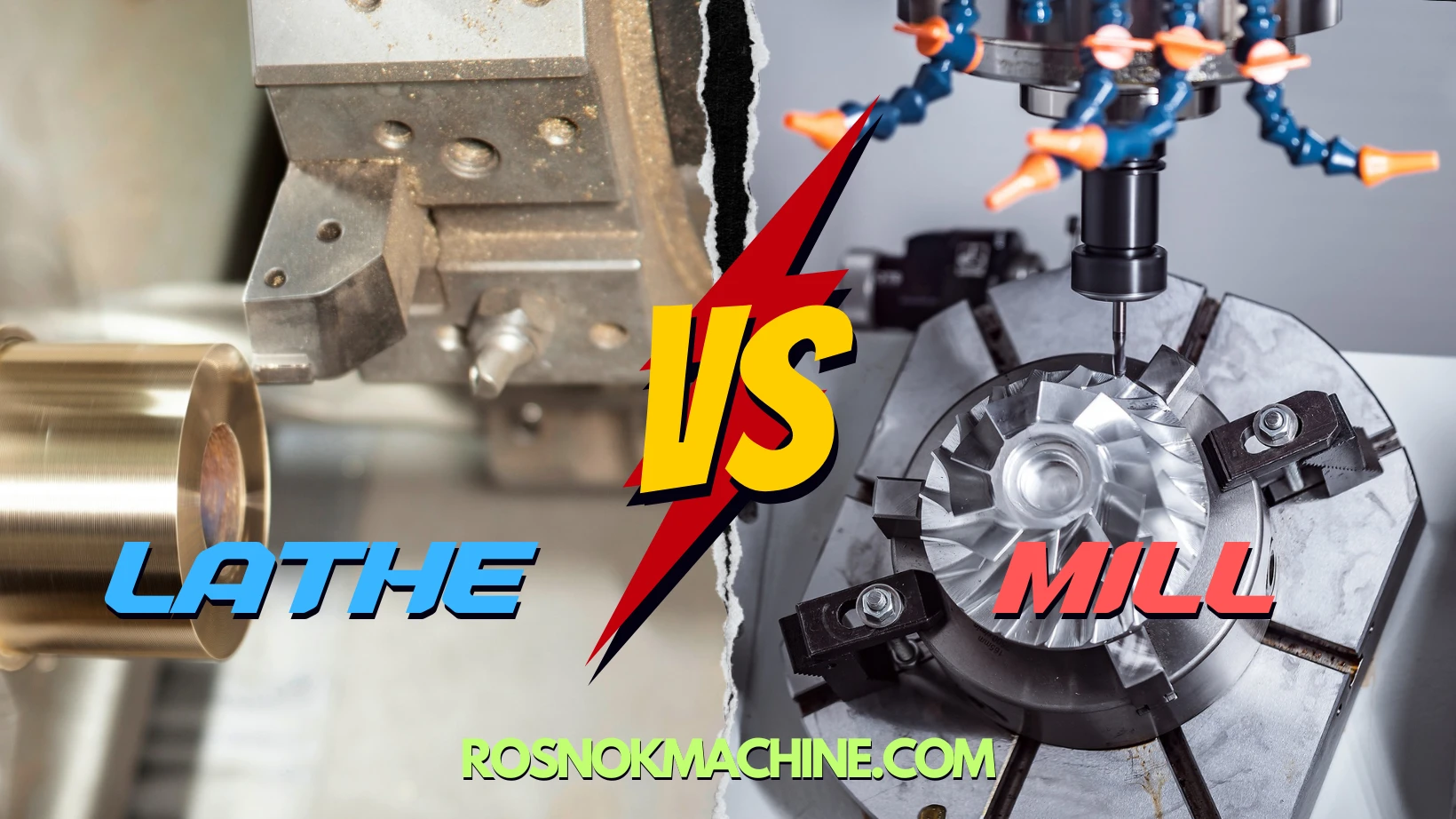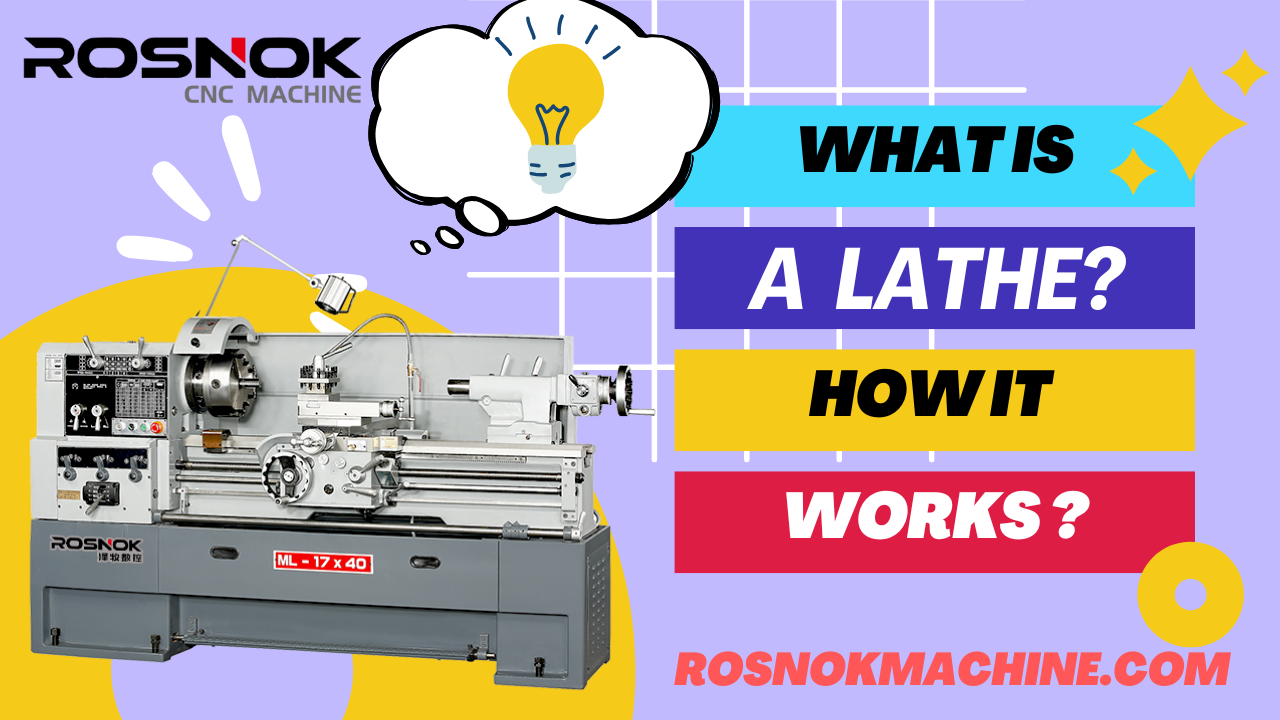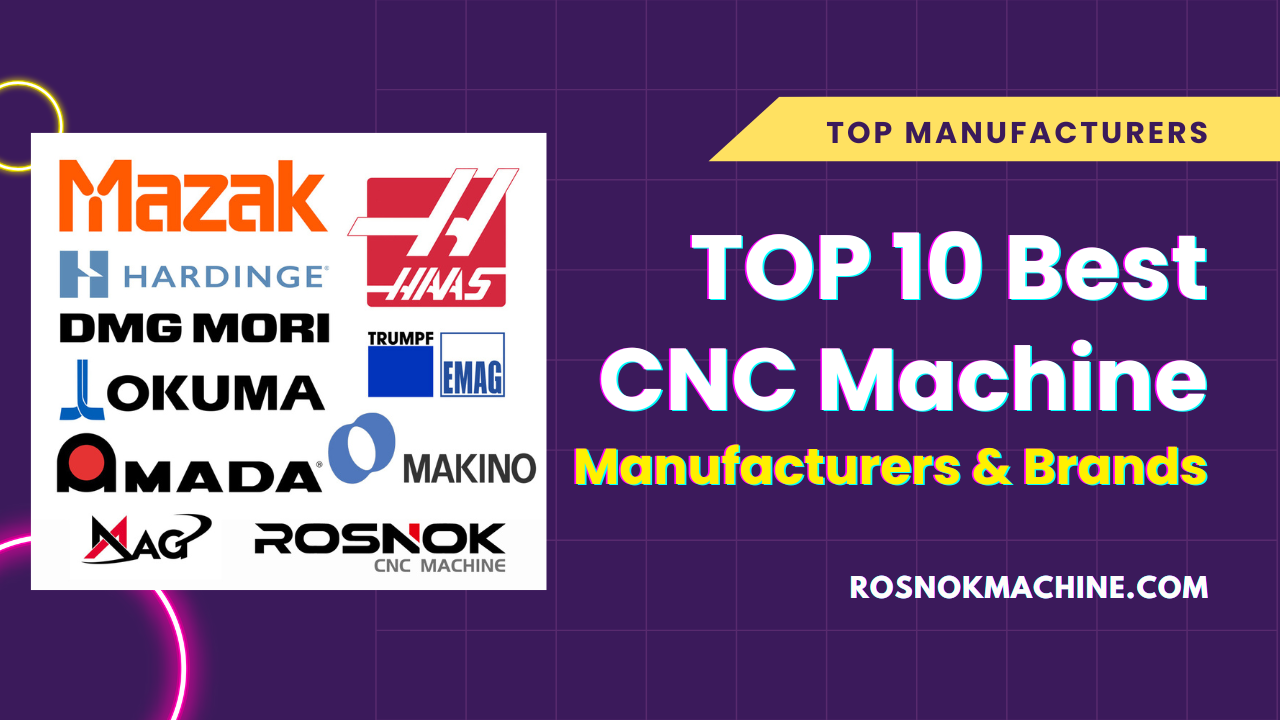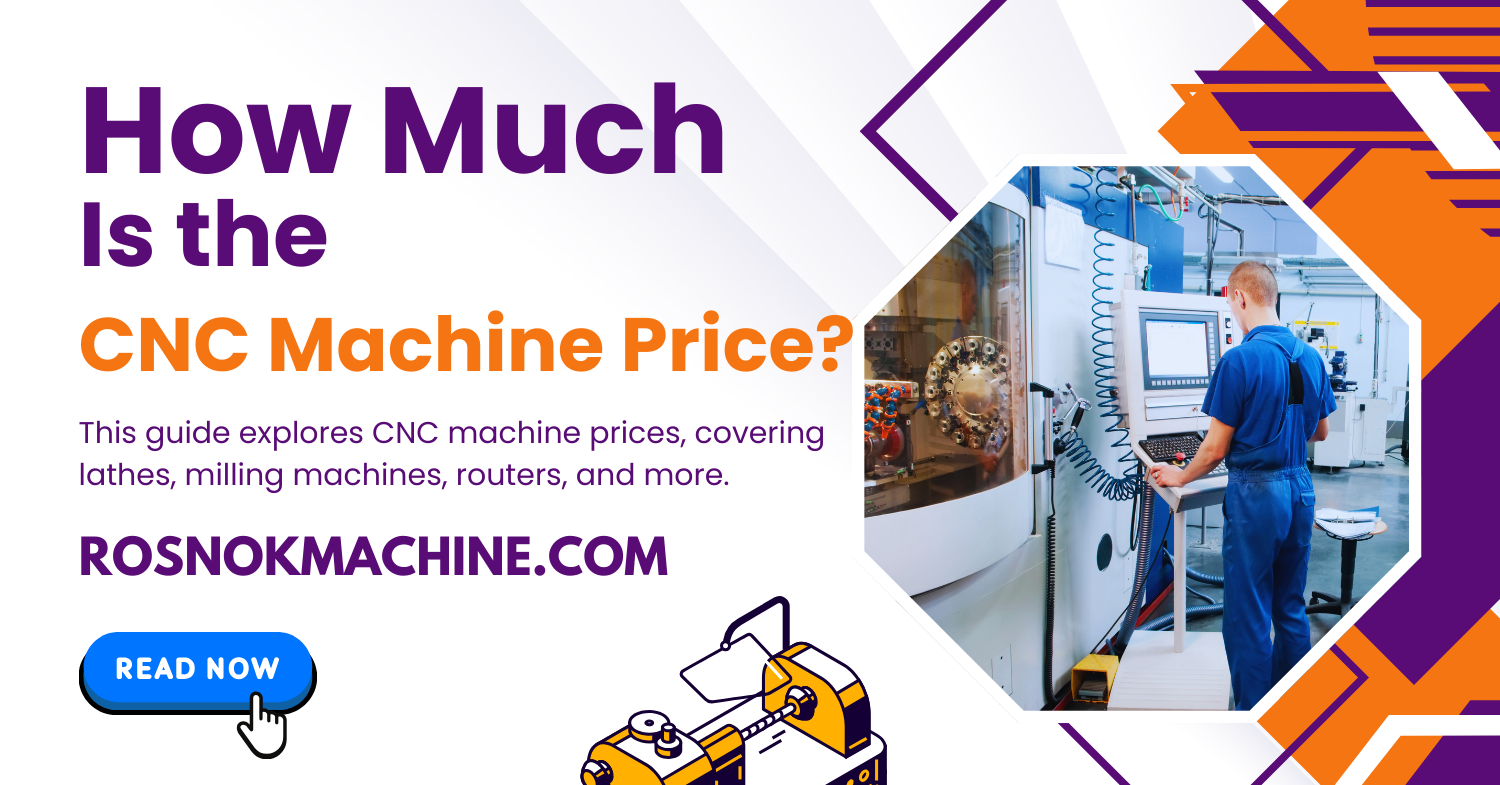Buying a lathe but don’t know which type or model fits your machining needs? Unsure what spindle bore, chuck size, or guideway type you actually need? Afraid of choosing the wrong lathe and wasting thousands? Worried about after-sales support, hidden defects, or poor precision? How do you avoid these costly mistakes?
This guide simplifies the complexity of buying a lathe by breaking down machine types, core components like spindles and guideways, and what specs truly matter for accuracy, load capacity, and long-term reliability. Whether you’re cutting threads, turning precision shafts, or machining large-diameter parts, we’ll help you choose a lathe that matches your materials, tolerances, and budget—without overpaying for features you don’t need. It’s everything a smart buyer needs to avoid guesswork and invest with confidence.
Continue reading to learn how to choose the right lathe type, understand key specs, avoid common pitfalls, and make a smart, ROI-driven investment in your machining success.
Why Buying a Lathe Is a Critical Investment
When buying a lathe, you’re not just shopping for another piece of equipment—you’re making a strategic investment that directly impacts your production capabilities, quality control, and long-term profitability. Whether you’re running a small workshop or managing industrial-scale output, choosing the right lathe defines how well you meet customer demands, manage downtime, and control costs. This section explains why the decision carries more weight than most buyers realize—and how to get it right from the start.
The High Cost of Choosing the Wrong Machine
Buying a lathe is not just a purchase—it’s a production decision that directly affects your capacity, delivery time, and long-term profitability. Many first-time buyers focus only on price and overlook key performance specs, which often leads to machines that can’t meet their real workload demands.
One common mistake is selecting a lathe with the wrong spindle bore. For example, if your spindle bore is too small, you may not be able to clamp larger workpieces at all. In other cases, a lightweight lathe bed may lack the rigidity to handle heavy metal cutting, causing vibrations that compromise precision. Once you start seeing dimensional drift, tool marks, or inconsistent tolerances, the impact can ripple across the production line—leading to rejected parts, wasted material, machine downtime, and missed delivery deadlines.
Trying to cut costs by choosing an undersized or underpowered machine often ends up costing more in the long run. When machines frequently overheat, lose accuracy, or break down under load, you not only face expensive repairs but also the risk of reputational damage due to delivery delays or poor part quality. These consequences far outweigh the few thousand dollars you might save upfront when trying to buy a lathe machine solely based on budget.
If you’re unsure how to buy a lathe that truly fits your part size, tolerance requirements, and daily workload, you’re not alone. That’s why this lathe buying guide is essential for anyone planning to buy a metal lathe—especially when precision and consistency are mission-critical.
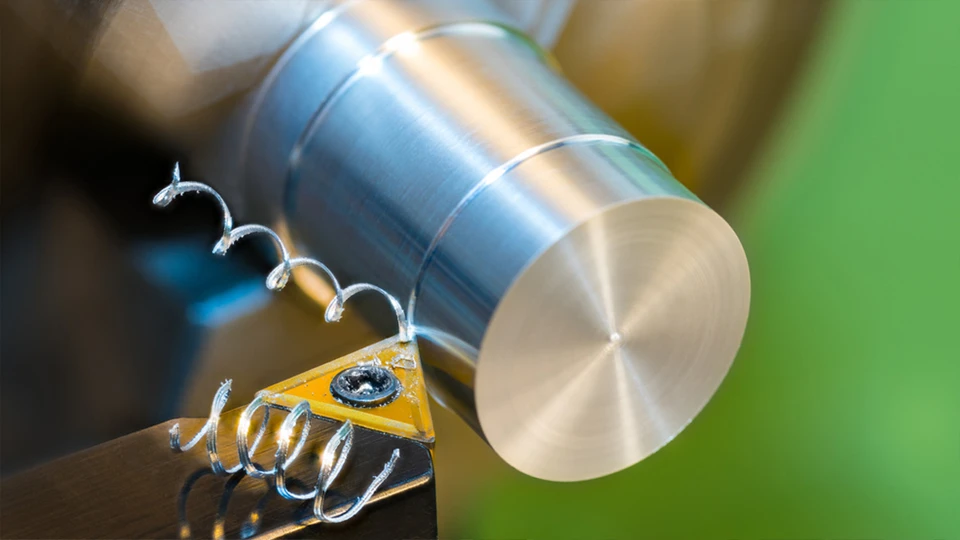
How the Right Lathe Drives Precision and Profit
A properly selected lathe doesn’t just meet your technical requirements—it elevates your entire production system. When you buy a CNC lathe or manual lathe that’s matched to your materials and machining goals, you reduce setup time, avoid tool chatter, and maintain dimensional accuracy across long production runs.
For example, a lathe with the correct swing capacity and chuck size ensures your parts are clamped securely, minimizing the need for frequent realignment. A strong, rigid bed design—especially with box guideways for heavy-duty applications—allows for consistent performance even under high-load conditions. And when the spindle RPM range and feed rates are well-suited to your material, you’ll see smoother finishes, fewer tool changes, and longer tool life.
This directly reduces your per-part cost and increases your throughput. Even for small shops, buying a lathe for metal that’s optimized for your specific workpiece size and tolerance range can dramatically improve cycle times and scrap rates. In batch production or continuous operation, these differences quickly compound into real financial gains.
In short, the right investment helps you deliver better parts faster—with fewer breakdowns and lower operational cost. That’s the true ROI of making a smart decision when you buy lathe equipment. Whether you’re trying to figure out what lathe to buy or where to buy a lathe online, the right choice now sets the foundation for long-term success.
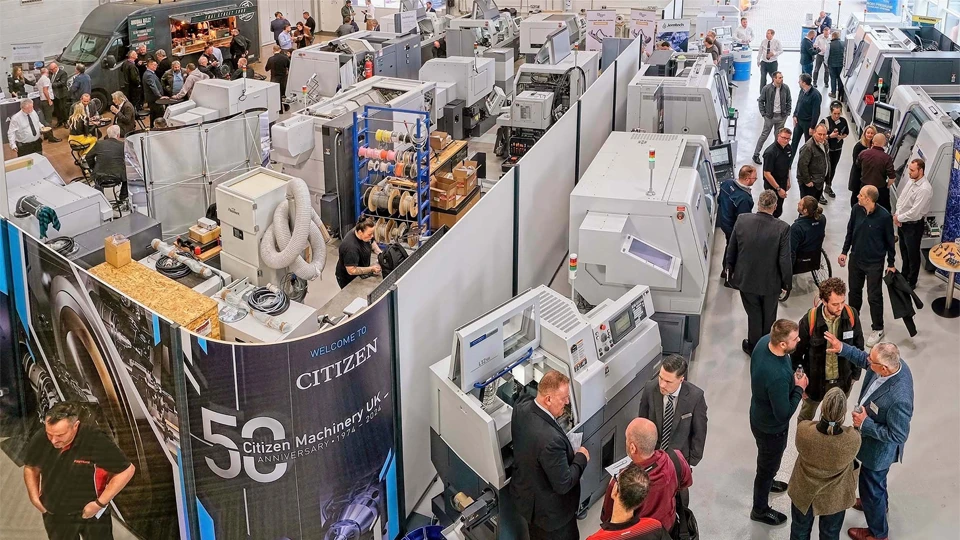
Understanding Lathe Types and Their Use Cases
Choosing the right lathe begins with knowing your options. Not all lathes are created equal—different types are designed for different workloads, materials, precision levels, and industries. Whether you’re machining small aluminum parts or threading oil pipes, understanding each lathe type’s structure and purpose helps you avoid mismatched purchases and costly underperformance. In this section, we’ll break down the main categories of lathes, compare their capabilities, and connect them to specific real-world applications so you can narrow down your decision with confidence.
Manual vs CNC Lathe: What’s the Difference?
Manual lathes and CNC lathes serve very different operators and purposes. A manual lathe relies on skilled human control. Operators adjust feed, speed, and positioning by hand using dials and levers—great for low-volume jobs, one-offs, or training environments. They’re cost-effective and easier to maintain but demand more experience to ensure consistent quality.
CNC lathes, on the other hand, run via programmable code (G-code) and operate with minimal manual intervention. They offer outstanding repeatability, precision, and throughput, making them ideal for high-volume production or complex geometries. These machines support advanced features like live tooling, multi-axis movement, and automatic tool changers.
For specialized industries like aerospace or oil & gas, these advanced lathe models offer unmatched accuracy and high-throughput performance—especially when tight tolerances or long workpieces are involved.
Common Lathe Types: Bench, Engine, Turret, Toolroom
Beyond the control method, lathes are also categorized by size, configuration, and flexibility. Let’s look at some of the most common:
- Bench Lathe: Compact and usually manual, these are mounted on workbenches and best suited for hobbyists or small parts.
- Engine Lathe: The workhorse of general-purpose machining. Versatile and available in both manual and CNC variants, engine lathes are ideal for shafts, bushings, and prototype parts.
- Turret Lathe: Designed for repetitive production, turret lathes come with a tool turret that speeds up multi-step operations—common in job shops.
- Toolroom Lathe: Precision-focused and highly accurate, these are typically used in aerospace or die/mold shops where tolerances are tight.
Each of these lathe types comes in different sizes and power levels, and the right choice depends on what materials you’re working with and how often you change part setups. When buying a lathe machine, always align your production needs with the structure and strength of the lathe you choose.
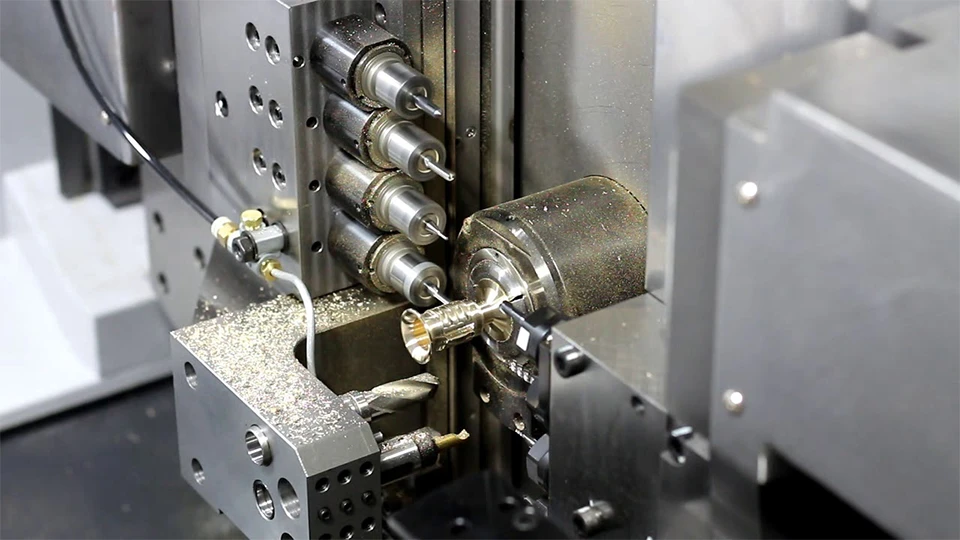
Specialty Lathes: Swiss-Type, Pipe Thread, Vertical Lathe
Certain industries demand more specialized lathes that handle specific workpiece shapes or sizes:
- Swiss-Type CNC Lathe: Perfect for long, slender parts such as medical screws, dental implants, and watch components. These machines hold tight tolerances and reduce deflection by supporting the part close to the cutting tool.
- Pipe Thread Lathe: Designed to cut tapered or straight threads on pipe ends—widely used in the oil and gas sector, especially for heavy-duty casing, tubing, and drill pipe.
- Vertical Lathe (VTL): Built for large-diameter, heavy workpieces such as wheel hubs, flywheels, and turbine parts. The vertical setup allows gravity to aid part stability and positioning.
If you’re looking to buy a metal lathe online and work in industries like aerospace, oilfield services, or medical device manufacturing, these specialty options can drastically improve both output and quality—provided they’re chosen correctly.
Which Type is Right for Your Workpiece and Industry?
The lathe you choose should match your part dimensions, required tolerances, and material type. Here’s a quick reference guide:
- Long shafts (e.g., guide rods, surgical pins) → Swiss-Type CNC Lathe
- Heavy tubes or pipes with threads (e.g., petroleum tubing) → Pipe Thread Lathe
- Large diameter parts (e.g., rims, pulleys) → Vertical Lathe
- General machining of steel or aluminum blocks → Engine or Toolroom Lathe
- High-mix, low-volume production → Turret Lathe or Manual Lathe
- Mass production with tight tolerance → CNC Lathe with automation
Still unsure what lathe to buy? Use your most common part as a benchmark—measure its length, diameter, tolerance requirement, and batch volume. That will help you decide whether to buy a manual lathe or a CNC model, and what specific category will give you the most efficient returns.

Key Specifications That Actually Matter
Buying a lathe is not just about selecting a machine—it’s about matching capability to application. To make the right choice, you need to understand how each core specification affects your machining performance, part compatibility, and operational limits.
If you’ve ever wondered what lathe to buy for your part size, cutting force, or material, this section breaks down the specs that truly matter—so you avoid overpaying for features you don’t need or underbuying a machine that can’t handle your workload.
Spindle Bore, Chuck Size, and Swing Over Bed
These three specs determine the maximum size of the workpiece your lathe can handle. The spindle bore refers to the hole through the spindle, which dictates the diameter of bar stock you can feed through. If you’re planning to turn pipes, shafts, or long rods, a larger bore (e.g. 80–130mm) gives you far more flexibility.
Chuck size affects how securely the part is clamped. A small chuck may not grip large or irregular parts well, increasing vibration or slippage during cutting. And swing over bed defines the largest diameter you can safely rotate—critical if you’re machining flanges, discs, or large-diameter rings.
Rule of thumb: Always leave at least 20% margin between your max part size and your lathe’s limits. This ensures safer clamping, cleaner finishes, and avoids overloading the spindle or guideways.
For anyone looking to buy a metal lathe, these numbers are not just specs—they’re your operational boundaries. If you misjudge them, even the best lathe machine won’t fit your needs.
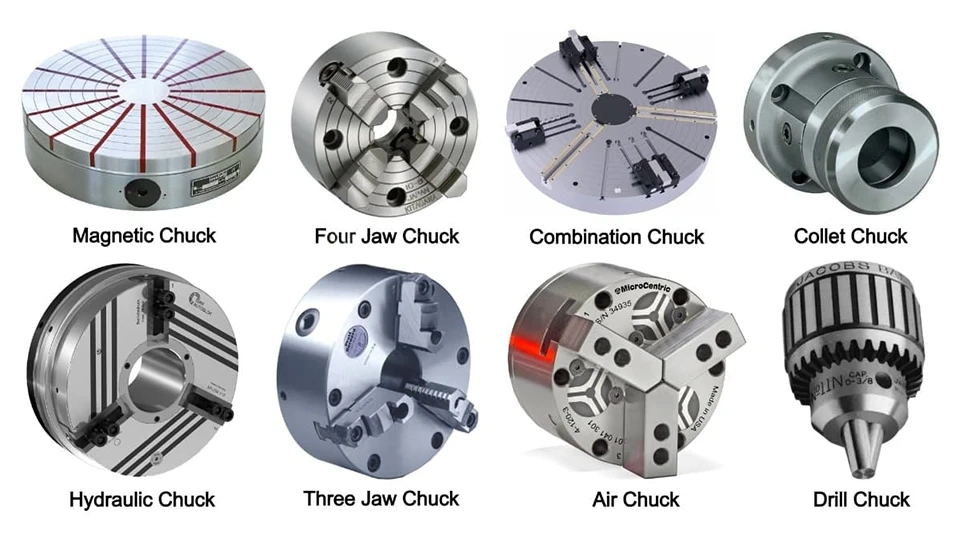
RPM, Feed Rate, Axis Travel & Motor Power
Your machine’s RPM range and feed rate determine its ability to cut cleanly and efficiently across different materials. For example, soft metals like aluminum need high-speed cutting (3000+ RPM), while tough alloys like stainless steel benefit from slower, high-torque feeds.
Axis travel limits how far your tool can move—both in X (diameter) and Z (length). If you buy a CNC lathe with limited travel, you’ll constantly need to reposition parts, wasting time and increasing scrap.
Motor power, often expressed in kW or HP, affects cutting depth and chip load capacity. Underpowered machines tend to stall or overheat during heavy-duty operations.
Together, these specs shape everything from surface finish quality to cycle time. They’re especially important if you’re considering buying a lathe for high-volume or high-precision production.
Guideway Types: Linear vs Box Ways
Guideways are the rails that support the lathe’s moving components. You’ll mostly find two types: linear rails and box ways.
- Linear guideways are smoother and faster. They’re perfect for light-to-medium duty CNC lathes where speed and precision matter more than load resistance. Maintenance is easier too.
- Box ways, on the other hand, offer much greater rigidity and damping. They handle heavy cuts and hard materials better—ideal for jobs requiring deep passes or cutting tough metals like titanium.
If you’re buying a lathe for metal machining in industries like aerospace or oil & gas, box guideways often give you the stability and longevity needed. For electronics, medical parts, or small shafts, linear rails may be a better fit.
Understanding this difference helps you align machine structure with your expected cutting force and part weight—both critical for long-term accuracy.
CNC Controller Systems and Automation Features
When buying a CNC lathe machine, don’t overlook the control system—it’s the brain of the operation.
Top-tier systems like Fanuc, Siemens, Mitsubishi, and GSK vary in interface, programming language, toolpath optimization, and network connectivity. Some controllers offer native support for tool life monitoring, remote diagnostics, and real-time load balancing.
Automation features such as bar feeders, automatic tool changers (ATCs), and robot arms are no longer luxuries. They’re must-haves if you’re planning to scale or run lights-out operations.
At Rosnok, we support multi-brand controllers and offer integration-ready solutions for both basic automation and fully networked smart factories. Whether you’re buying a CNC lathe online or requesting a custom solution, your controller choice directly affects your team’s learning curve and upgrade potential.
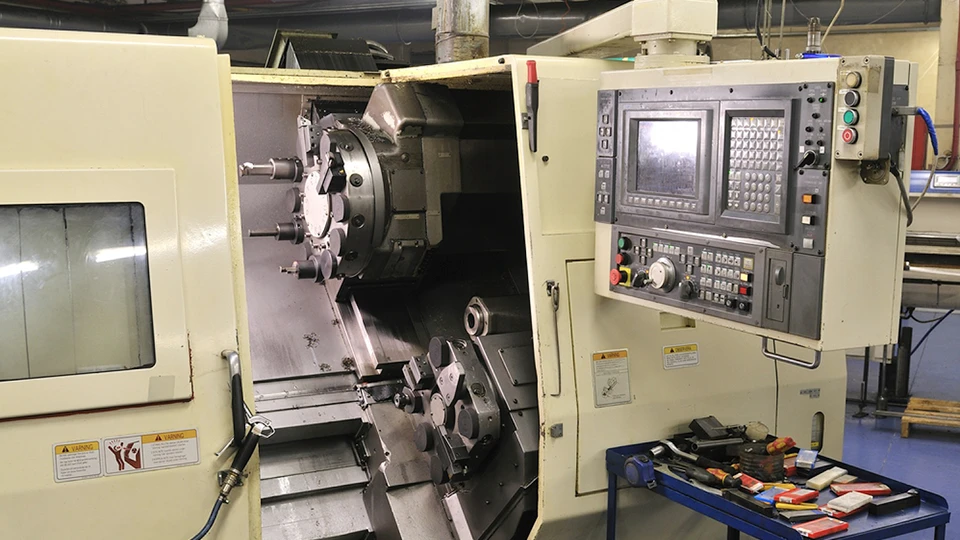
How to Choose the Right Lathe for Your Needs
Not all lathes fit all jobs. Before buying a lathe, define what parts you’ll machine, how many you’ll produce, and what level of precision you need. This section helps you build a smart selection model based on part specs, output scale, and long-term ROI—so you don’t overpay or underbuy.
Define Your Part Specs: Size, Material, and Tolerance
Every successful lathe purchase starts with a clear understanding of your parts. Are you machining long shafts, small bushings, or thin-walled tubes? The physical dimensions—length, diameter, and wall thickness—will determine the minimum spindle bore, chuck size, and swing capacity your machine must support.
Materials matter too. Cutting soft aluminum is one thing; turning stainless steel or titanium is another. Harder materials demand greater spindle torque, stronger cutting forces, and superior rigidity—especially in tight-tolerance work. If you’re buying a lathe for medical or aerospace applications, make sure the bed and guideway system are built for repeatability under load.
And don’t overlook tolerances. If your drawings specify ±0.01 mm or better, precision becomes non-negotiable. You’ll need a machine with excellent repeatability, thermal stability, and possibly live tooling to reduce secondary operations. If you’re unsure how to buy a metal lathe that matches these specs, always overestimate slightly—better to have headroom than a machine that can’t keep up.
Estimate Production Volume and Scaling Potential
Think beyond today’s workload. Will you be turning a few dozen parts a week—or a few thousand per month in 18 months’ time? Your production volume defines what lathe configuration makes sense.
For prototyping or low-batch work, a manual lathe or entry-level CNC lathe might suffice. But for scaling up, consider automation-ready machines: bar feeders, tool turrets with multiple stations, or CNC lathes with live tooling. These features can dramatically cut setup time and manual intervention.
Also think modular. Choosing a CNC lathe machine that supports future upgrades—like adding automatic loading or integration into a production line—ensures your equipment investment grows with your business. If you’re looking to buy a CNC lathe online, check specs like turret expandability, extra axis options, and I/O interfaces.
The bottom line? Don’t buy just for today. Buy a lathe that supports your three-year production vision.
What Features Are Worth Paying For—and What’s Not
Not every premium feature adds real value. When buying a lathe, focus on elements that impact long-term ROI.
Here’s what’s worth the investment:
- High-precision spindle bearings: Crucial for tight tolerances and long part life.
- Servo-driven tailstock or turret: Reduces cycle time and operator error.
- Chip conveyor system: Speeds up cleaning and prevents heat buildup from swarf.
- Inverter-controlled motors: Allow variable speed cutting with greater efficiency.
On the other hand, features like fancy touchscreens, extended lighting kits, or custom paint jobs may look good but rarely improve output or accuracy. For buyers asking “what lathe should I buy,” the answer lies in what directly enhances performance and reliability—not cosmetics.
A good lathe doesn’t have to be expensive, but it should deliver performance where it counts. This section of our lathe buying guide helps you differentiate between essential specs and unnecessary extras—so you can invest wisely without overpaying.
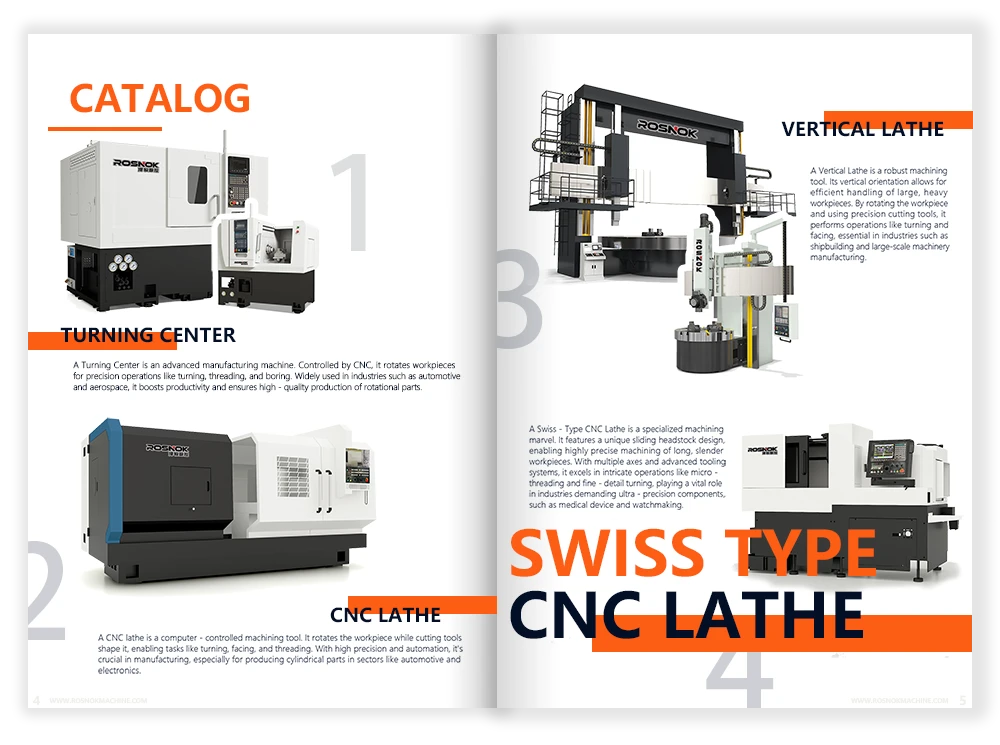
Common Mistakes First-Time Buyers Should Avoid
If you’re buying a lathe for the first time, it’s easy to get swept up in features, specs—or worse, price tags. But buying a lathe without a clear understanding of long-term needs and operating conditions can lead to costly regrets. This section highlights common traps that many newcomers fall into—and how to avoid them.
Choosing Based on Price Alone
It’s tempting to go for the cheapest option, especially when budgets are tight. But many buyers learn the hard way that “low cost” often means “high maintenance.” Cheap machines may cut corners in components like spindle bearings, guideways, or electrical systems. The result? Unstable tolerances, inconsistent finishes, and frequent downtime.
Some entry-level machines also lack critical features like inverter motors or chip conveyors, increasing manual workload and operator fatigue. Worse, budget machines often come with limited warranties and virtually no support, especially when bought from unknown overseas resellers. So while the initial quote might seem attractive, the total cost of ownership—including breakdowns, part scrap, and lost production—can quickly exceed the savings.
In short, don’t buy a lathe just because it’s cheap. Buy it because it will hold up in your actual working conditions.
Overlooking After-Sales Support and Spare Parts
Support doesn’t end at delivery—it starts there. One of the biggest mistakes first-time buyers make is assuming all machines are supported equally after purchase. They’re not.
Imagine this: Your machine breaks down mid-production, but the manufacturer doesn’t have local service engineers or can’t ship the replacement board for two weeks. That’s not just frustrating—it’s financially damaging. Delays, missed orders, and lost customer trust are real risks when you buy a lathe without verified support coverage.
That’s why it’s smart to buy from manufacturers who offer reliable after-sales care and parts supply. At Rosnok, we maintain global support channels and rapid-response spare parts services, so your operations stay on track even if issues arise.
Miscalculating Machine Footprint or Power Requirements
You’d be surprised how often buyers order a machine they can’t install.
Some machines require more floor space than expected, especially once you factor in tool changers, chip conveyors, or control panels. Others may need reinforced flooring to support weight—or specific crane access during unloading. Then there’s power: a 380V machine won’t run in a 220V-only facility without costly modification.
Always verify your workshop’s space, lifting capacity, and electrical configuration before finalizing a purchase. Don’t let logistical oversights delay production for weeks—or worse, make your new lathe unusable from day one.
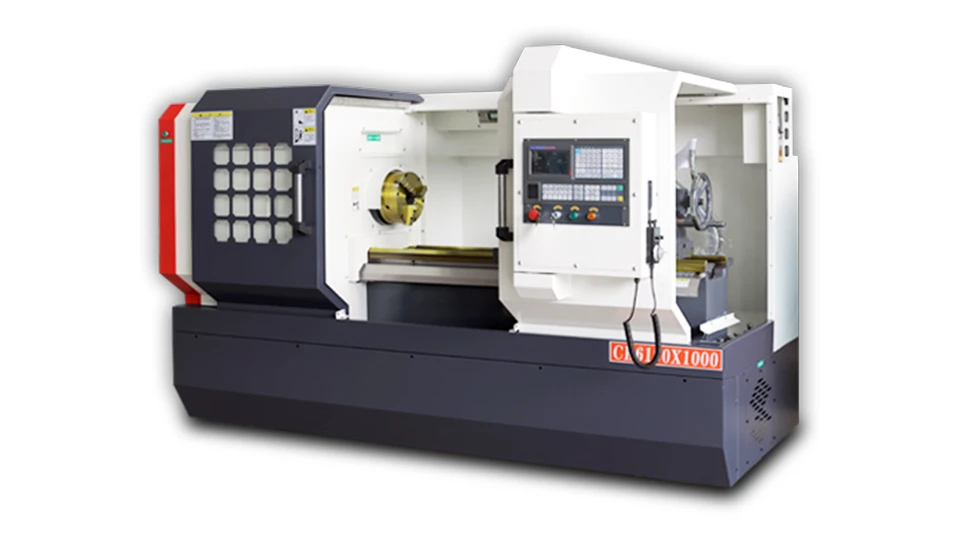
Comparing Manufacturers and Country of Origin
If you’re planning to buy a lathe for metal machining, the brand you choose is just as important as the machine specs. A lathe is only as reliable as the engineering behind it—and behind every machine is a manufacturer with its own standards, materials, and track record. In this section, I’ll help you understand how to evaluate lathe makers, compare regions of origin, and explain why Rosnok delivers one of the strongest cost-to-performance ratios in the global market.
What Makes a Reliable Lathe Manufacturer
A trustworthy lathe manufacturer builds reliability into every step of production. It starts with raw materials—look for brands that use high-grade Meehanite or equivalent casting material for the bed and column. These determine rigidity, vibration control, and lifespan. The casting process itself should follow strict thermal treatment procedures to prevent internal stress and future deformation.
Precision testing is another sign of a reputable brand. Before shipping, every machine should undergo multi-point calibration using certified instruments like laser interferometers and ball bar systems. This ensures the lathe meets geometric accuracy specs and dynamic stability standards under real-world workloads.
You should also check for internationally recognized certifications. Reliable lathe builders typically have ISO 9001 for quality systems, CE marking for European safety compliance, and sometimes TUV or UL if exporting globally. If you’re buying a CNC lathe machine from overseas, these accreditations are often your best window into a brand’s manufacturing discipline.
Finally, review long-term support. Does the manufacturer have local agents or spare parts warehouses in your region? Are technical manuals, wiring diagrams, and programming guides readily available? Brands that invest in global support tend to treat quality and customer satisfaction as part of the product—not an afterthought.
China vs Taiwan vs Europe: Key Differences
When comparing where to buy a lathe machine, origin plays a role—but it’s not about nationality, it’s about maturity of supply chain and engineering focus.
European lathes (Germany, Italy, Switzerland) are known for high-precision mechanics, especially in aerospace and mold-making. They often use proprietary control systems and premium linear components, but the cost is significant and lead times long. If you’re running ultra-tight tolerance work and budget isn’t an issue, these are strong—but sometimes overbuilt—options.
Taiwanese machines strike a middle ground. Many mid- to high-end lathe brands from Taiwan use Japanese bearings, Fanuc/Siemens control systems, and solid Meehanite castings. Their advantage lies in build quality with shorter delivery times. Ideal for small-to-medium shops looking to buy CNC lathe equipment with competitive specs.
Chinese lathe manufacturers have made rapid strides in the past decade. The best ones (Rosnok included) now offer ISO-certified production lines, modern 5-axis machining for components, and smart CNC systems that rival global brands. The main advantage? Exceptional cost-efficiency and better ROI—especially for buyers focused on batch production, job shop flexibility, or entry into automated turning.
But as with all regions, quality varies. Avoid unknown OEMs or resellers with no track record. Instead, seek out Chinese brands with verified export history, multilingual documentation, and responsive service infrastructure.

Comparing Manufacturers and Country of Origin
If you’re planning to buy a lathe for metal machining, the brand you choose is just as important as the machine specs. A lathe is only as reliable as the engineering behind it—and behind every machine is a manufacturer with its own standards, materials, and track record. In this section, I’ll help you understand how to evaluate lathe makers and compare regions of origin.
What Makes a Reliable Lathe Manufacturer
A trustworthy lathe manufacturer builds reliability into every step of production. It starts with raw materials—look for brands that use high-grade Meehanite or equivalent casting material for the bed and column. These determine rigidity, vibration control, and lifespan. The casting process itself should follow strict thermal treatment procedures to prevent internal stress and future deformation.
Precision testing is another sign of a reputable brand. Before shipping, every machine should undergo multi-point calibration using certified instruments like laser interferometers and ball bar systems. This ensures the lathe meets geometric accuracy specs and dynamic stability standards under real-world workloads.
You should also check for internationally recognized certifications. Reliable lathe builders typically have ISO 9001 for quality systems, CE marking for European safety compliance, and sometimes TUV or UL if exporting globally. If you’re buying a CNC lathe machine from overseas, these accreditations are often your best window into a brand’s manufacturing discipline.
Finally, review long-term support. Does the manufacturer have local agents or spare parts warehouses in your region? Are technical manuals, wiring diagrams, and programming guides readily available? Brands that invest in global support tend to treat quality and customer satisfaction as part of the product—not an afterthought.
China vs Taiwan vs Europe: Key Differences
When comparing where to buy a lathe machine, origin plays a role—but it’s not about nationality, it’s about maturity of supply chain and engineering focus.
European lathes (Germany, Italy, Switzerland) are known for high-precision mechanics, especially in aerospace and mold-making. They often use proprietary control systems and premium linear components, but the cost is significant and lead times long. If you’re running ultra-tight tolerance work and budget isn’t an issue, these are strong—but sometimes overbuilt—options.
Taiwanese machines strike a middle ground. Many mid- to high-end lathe brands from Taiwan use Japanese bearings, Fanuc/Siemens control systems, and solid Meehanite castings. Their advantage lies in build quality with shorter delivery times. Ideal for small-to-medium shops looking to buy CNC lathe equipment with competitive specs.
Chinese lathe manufacturers have made rapid strides in the past decade. The best ones now offer ISO-certified production lines, modern 5-axis machining for components, and smart CNC systems that rival global brands. The main advantage? Exceptional cost-efficiency and better ROI—especially for buyers focused on batch production, job shop flexibility, or entry into automated turning.
But as with all regions, quality varies. Avoid unknown OEMs or resellers with no track record. Instead, seek out Chinese brands with verified export history, multilingual documentation, and responsive service infrastructure.
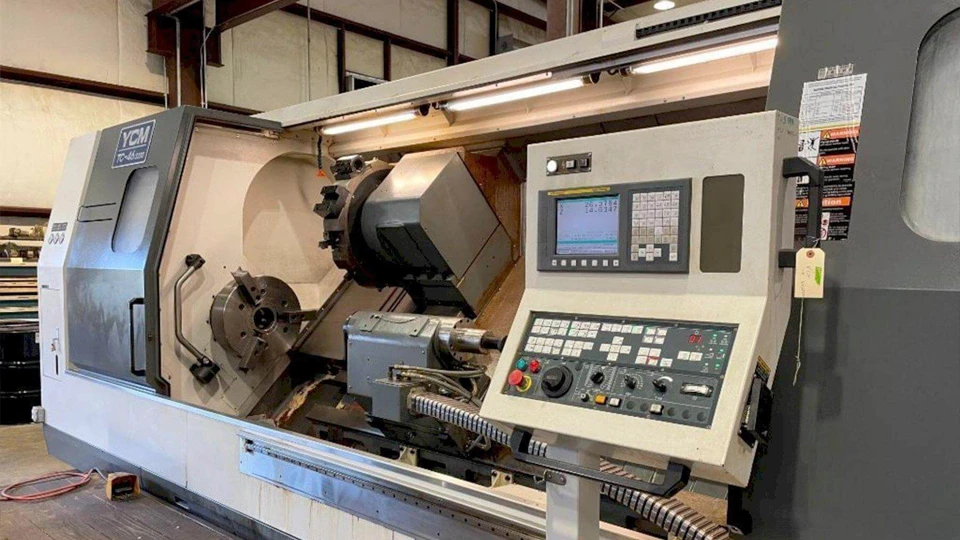
After-Sales Service and Maintenance Considerations
Buying a lathe isn’t just about what happens on the shop floor—it’s also about what happens when something goes wrong. Many first-time buyers hesitate to commit because they fear unexpected breakdowns, missing spare parts, or not knowing how to get technical support. In reality, long-term performance depends not just on the lathe itself, but also on the ecosystem of service and maintenance that supports it. This section helps you understand what after-sales factors to consider when buying a lathe machine.
Installation and Operator Training
The best machine in the world is useless if your team doesn’t know how to run it properly. Installation and training are the first real tests of manufacturer support. You want more than a delivery—you want operational readiness.
A reliable supplier should provide remote video installation guidance, especially when on-site visits aren’t practical. Clear instruction manuals in multiple languages (English and Chinese, at minimum) should be standard. More importantly, machine-specific training videos or interactive digital resources can drastically reduce ramp-up time for your operators.
If you’re planning to buy a CNC lathe online, ask if the vendor provides live video support or pre-recorded tutorials tailored to your specific machine model. This ensures you go from delivery to production without days—or weeks—of delay. A good training program also reduces long-term wear and tear, because trained operators make fewer setup mistakes that lead to mechanical strain or misalignment.
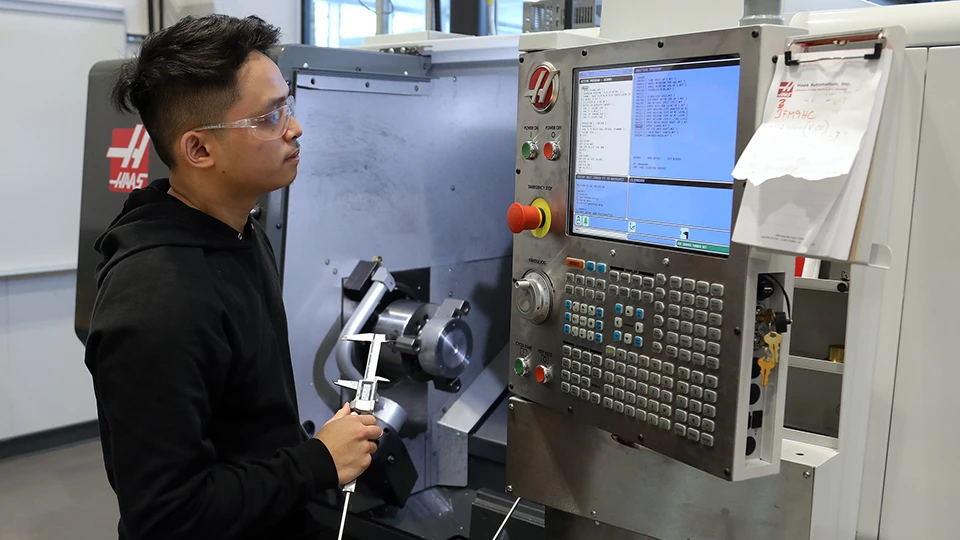
Spare Parts, Warranty Coverage, and Downtime Response
Even with a high-quality lathe, wear and breakdowns are inevitable over time. What matters most is how quickly and easily you can get support when something goes wrong.
Before you buy lathe equipment, ask where the manufacturer stocks critical spare parts. Do they maintain regional warehouses, or are parts shipped internationally on demand? The availability of components like spindle bearings, drive motors, and control boards can make or break your maintenance plan.
Warranty terms are another key factor. A minimum of 12 months full coverage should be standard, and it’s worth checking whether extended warranties are available. What does the warranty include—labor, parts, remote diagnostics? Is there a service team that responds within 24 or 48 hours?
If you’re unsure where to buy a lathe machine that comes with dependable support, use the warranty and parts availability as your filter. A well-supported machine isn’t just easier to maintain—it stays productive longer, protects your investment, and avoids costly downtime.
Maintenance Essentials to Extend Machine Life
You don’t need to be a technician to keep your lathe running well—but you do need a system. Preventive maintenance, even at a basic level, can extend the life of your lathe by years and help you avoid expensive repairs.
Start with a seasonal inspection checklist. This should include daily checks for lubrication levels, weekly spindle temperature checks, monthly verification of axis backlash, and quarterly alignment reviews. Many buyers neglect things like coolant cleanliness or chip accumulation, which can damage sensors and cause premature wear on key components.
Pay special attention to wear parts like belts, filters, wipers, and tool holders. A good CNC lathe buying guide should include a recommended replacement cycle for these parts. Also, learn to recognize early warning signs—unusual spindle noise, drift in part dimensions, or vibration marks on the finished surface are all indicators that something’s off.
By building these habits into your daily routine, you create a maintenance culture that pays off in uptime and accuracy. When you buy a lathe for metal machining, you’re not just buying capacity—you’re buying a commitment to care, and care begins with the right knowledge and tools.
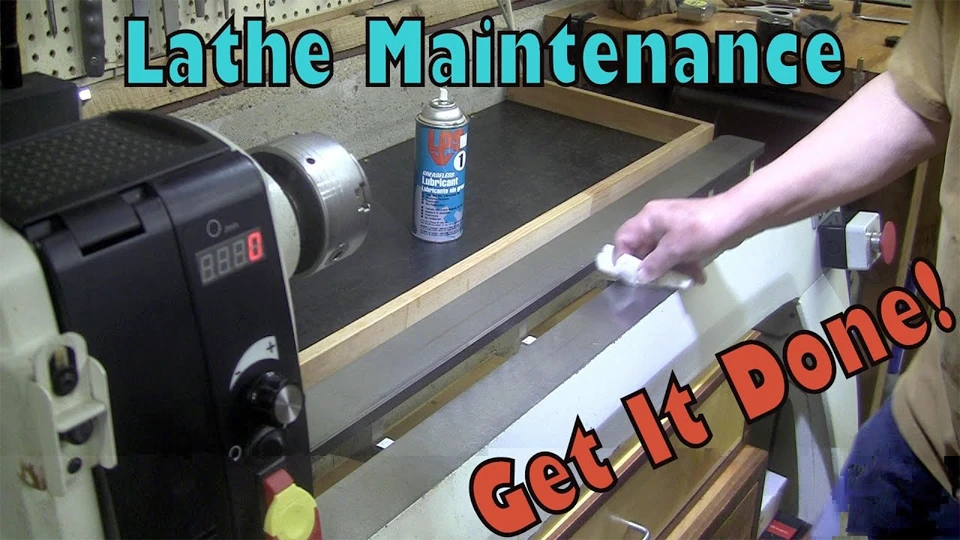
Your Final Checklist Before Buying a Lathe
Before you sign the purchase order or confirm payment, stop and ask yourself: have you really checked everything? Buying a lathe—whether manual or CNC—is not a simple transaction; it’s a long-term commitment tied to your production capacity, uptime, and total operating cost. A structured checklist helps you filter out vague promises and ensures you don’t overlook hidden costs or critical documentation.
10 Questions to Ask Any Supplier
To make a confident and informed decision, you should be asking your lathe supplier the kind of questions that reveal real capability—not just marketing talk. Here are ten essential ones to keep in your pocket:
- What is the machine’s certified repeatability and positioning accuracy?
- Does the lathe come with an official accuracy inspection report?
- Which CNC controller brand and model is included—Fanuc, Siemens, or other?
- Are there photos or videos of this lathe cutting real workpieces?
- What parts are standard, and what are optional upgrades?
- Is remote installation guidance or on-site training included?
- What’s the scope of the warranty—mechanical, electrical, control system?
- How quickly can you ship spare parts to my region?
- Do you provide post-sale service in my local language?
- Can I see customer references from companies like mine?
These questions are especially important if you plan to buy a lathe online or from a foreign country. Without physical access, your only defense is clarity and thorough documentation.
Key Documents and Certifications You Should Demand
Once you’re ready to buy a lathe—especially a metal lathe for precision machining—don’t walk away with just an invoice. Make sure the supplier provides a full document package that proves your machine is up to spec and legally compliant for your country.
At a minimum, request:
- CE Certificate (for Europe-bound machines)
- ISO 9001 certification proof (for manufacturing quality system)
- Final inspection report (dimensional accuracy, axis backlash, vibration)
- Machine operating manual (English or bilingual)
- Training attendance sheet or handover checklist
- Packing list (for customs declaration and insurance)
- Warranty certificate (with clearly written coverage terms)
If you’re unsure how to buy a CNC lathe machine and verify its quality, these documents are your starting point. They also serve as your protection if disputes arise over machine performance after installation.
Delivery Logistics, Customs, and Hidden Costs
You’ve chosen the right lathe, negotiated a good price, and scheduled the shipment. But what about what comes next? First-time buyers often forget to plan for what we call the “invisible cost zones”—things that can quickly make your total investment balloon if not considered early.
Here are key logistics and cost traps to prepare for:
- Machine size vs. factory entrance – Will it fit through your shop doors or under your crane?
- Foundation requirements – Does your lathe require a concrete base or vibration isolators?
- Power compatibility – Do you need a step-up/step-down transformer for local voltage?
- Lifting & unloading – Budget for forklifts, rigging crews, or cranes during delivery.
- Customs duties & broker fees – Especially important if you’re importing outside a free trade zone.
- Insurance during transit – Always clarify who covers the machine during international shipping.
Understanding the true cost of ownership (TCO) isn’t just about the base machine price. It’s about lifecycle cost, downtime risk, and whether your new machine is “plug-and-run” or “buy-and-fix.”
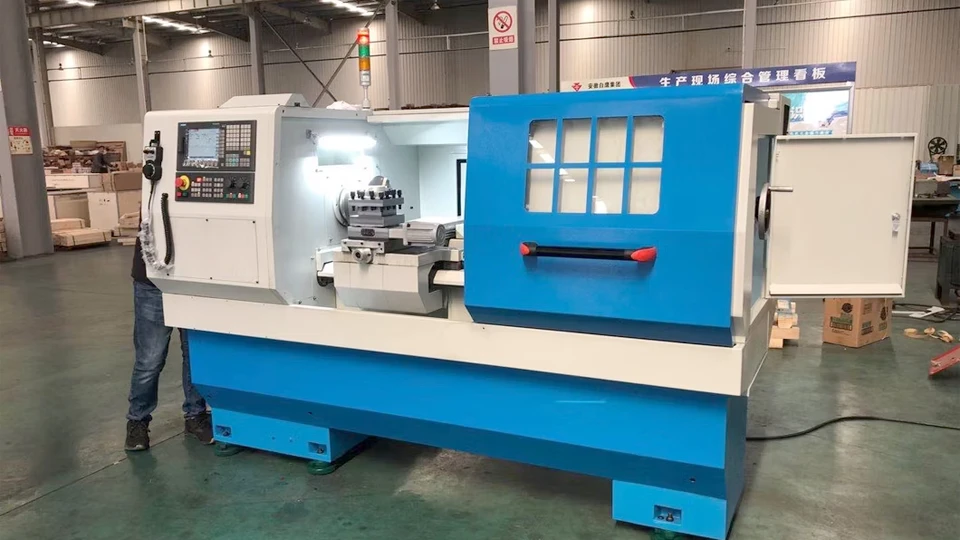
Conclusion
Buying a lathe isn’t just about choosing a machine—it’s about aligning performance specs, workflow compatibility, and long-term ROI. From spindle bore and chuck size to controller systems and axis travel, each technical parameter must match your workpiece size, material hardness, and tolerance limits. At the same time, you need to factor in production volume, support infrastructure, available floor space, and even electrical requirements.
Whether you’re considering a box-way lathe for heavy cutting or a Swiss-type CNC lathe for precision micro parts, the ideal machine balances current needs with future growth. Missteps—like choosing solely on price or overlooking after-sales service and certification documents—can result in costly downtime, hidden expenses, or even unusable equipment. A good lathe decision blends spec accuracy with practical foresight.
That’s why choosing a manufacturer with proven engineering, global support, and transparent production standards is essential. At Rosnok, we don’t just manufacture CNC lathes—we help customers worldwide buy the right lathe for their materials, tolerances, and long-term production goals. With CE, ISO, and TUV certifications, five workshops across 60,000 square meters, and a reputation built on real-world performance, Rosnok is trusted by manufacturers in Russia, Europe, South America, and beyond. When precision, support, and value matter, we’re ready to deliver.



